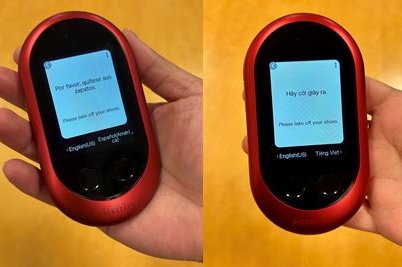
March 22, 2024
 Provided Image/TSA
Provided Image/TSA
The TSA is testing language translation devices at security checkpoints at Philadelphia International Airport. The technology, which translates English into 83 languages, can play audio or display text to help people understand security officers' instructions.
The U.S. Transportation Security Administration is using Philadelphia International Airport as a test site for new handheld devices that translate statements from TSA officers for people who aren't proficient with English.
The TSA said the devices are intended to make interactions with travelers who do not speak English easier and help them understand what officers are asking of them.
The devices are smaller than cell phones and contain libraries of 83 languages. An officer speaks into it and what was said gets translated into the language spoken by the passengers. The electronic translator can reproduce speech from a TSA officer as audio and as text displayed on the device's screen, making it useful for communicating with people who are deaf, hearing impaired or blind, too.
"We hope that this will turn out to be a valuable tool for our officers to provide guidance to passengers who might not speak English," said Gerardo Spero, TSA's federal security director at Philadelphia International Airport.
TSA has begun using five of the devices at the airport — in terminals A-East and A-West, and at the busiest checkpoints in terminals B, D and E.
The federal agency said officers have encountered benefits and technical challenges. One of the problems is that colloquial terms, like "pat-down," cannot be translated in every language, so officers have been advised find different words to explain what they need to do.
TSA officers can store up to 10,000 pre-programmed translations to handle typical interactions that help speed up the process. The devices also distinguish among dialects of the same language. With Spanish, for example, the translators are programmed to understand dialects spoken in Spain, Argentina, Colombia and the United States.
The TSA said it views the technology as a "game-changer" for assisting people who aren't fluent in English. Travelers at Philadelphia airport already have among the shortest wait times — at just over 9 minutes — at security points among the nation's 31 busiest airports, according to a study released last year.
"The field testing of these units is one step that we are taking to improve our communication with a broader traveling population," said Jose Bonilla, TSA's executive director of traveler engagement.